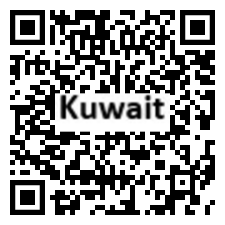Introduction
Background
Kuwait acquired independence from the United Kingdom in 1961. Kuwait was attacked and overrun by Iraq in August 1990 but liberated by a US-led UN coalition in February 1991. The AL-SABAH family has ruled since 1991 and reestablished an elected legislature that has become increasingly assertive.
Geography
Area
total: 17,818 sq km
land: 17,818 sq km
water: 0 sq km
Climate
dry desert; intensely hot summers; short, cool winters
Natural resources
petroleum, fish, shrimp, natural gas
People and Society
Population
3,103,580 (2023 est.)
Ethnic groups
Kuwaiti 30.4%, other Arab 27.4%, Asian 40.3%, African 1%, other 0.9% (includes European, North American, South American, and Australian) (2018 est.)
Languages
Arabic (official), English widely spoken
Religions
Muslim (official) 74.6%, Christian 18.2%, other and unspecified 7.2% (2013 est.)
Population growth rate
1.13% (2023 est.)
Government
Government type
constitutional monarchy (emirate)
Capital
name: Kuwait City
Executive branch
chief of state: Amir Sheikh MISHAL al-Ahmad al-Sabah (since 16 December 2023); he succeeded his brother, Amir Sheikh NAWAF al-Ahmad al-Jabir al-Sabah, who died the same day
head of government: Prime Minister Sheikh AHMAD AL-NAWAF Al-Ahmad al-Sabah (reappointed 5 March 2023); First Deputy Prime Minister and Minister of Interior Sheikh TALAL al-Khalid Al-Ahmad Al-Sabah (since 16 October 2022); Deputy Prime Minister and Minister of State for Cabinet Affairs Khalid al-FADIL (since 9 April 2022); Deputy Prime Minister and Minister of Oil Bader Hamed Yusef Al-Mula (since 16 October 2022)
Legislative branch
description: unicameral National Assembly or Majlis al-Umma (65 seats; 50 members directly elected from 5 multi-seat constituencies by simple majority vote and 15 ex-officio members (cabinet ministers) appointed by the amir; members serve 4-year terms)
Economy
Economic overview
small, high-income, oil-based Middle East economy; renewable energy proponent; regional finance and investment leader; maintains oldest sovereign wealth fund; emerging space and tourism industries; mid-way through 25-year development program
Real GDP (purchasing power parity)
$191.522 billion (2020 est.)
$210.13 billion (2019 est.)
$211.296 billion (2018 est.)
Real GDP per capita
$43,900 (2020 est.)
$47,300 (2019 est.)
$48,900 (2018 est.)
Agricultural products
eggs, dates, tomatoes, cucumbers, poultry, milk, mutton, potatoes, vegetables, eggplants
Industries
petroleum, petrochemicals, cement, shipbuilding and repair, water desalination, food processing, construction materials
Remittances
0.02% of GDP (2020 est.)
0.02% of GDP (2019 est.)
0.02% of GDP (2018 est.)
Exports
$77.121 billion (2021 est.)
$47.416 billion (2020 est.)
$72.833 billion (2019 est.)
Exports - partners
China 20%, South Korea 16%, India 15%, Japan 10%, Taiwan 6%, Vietnam 5% (2019)
Exports - commodities
crude petroleum, refined petroleum, natural gas, industrial hydrocarbon products, industrial alcohols (2021)
Imports
$48.954 billion (2021 est.)
$44.015 billion (2020 est.)
$59.654 billion (2019 est.)
Imports - partners
China 14%, United Arab Emirates 12%, United States 10%, Saudi Arabia 6%, Japan 6%, Germany 5%, India 5% (2019)
Imports - commodities
cars, broadcasting equipment, natural gas, packaged medicines, jewelry (2019)
Exchange rates
Kuwaiti dinars (KD) per US dollar -
Exchange rates:
0.302 (2021 est.)
0.306 (2020 est.)
0.304 (2019 est.)
0.302 (2018 est.)
0.303 (2017 est.)
Page last updated: Sunday, December 17, 2023
